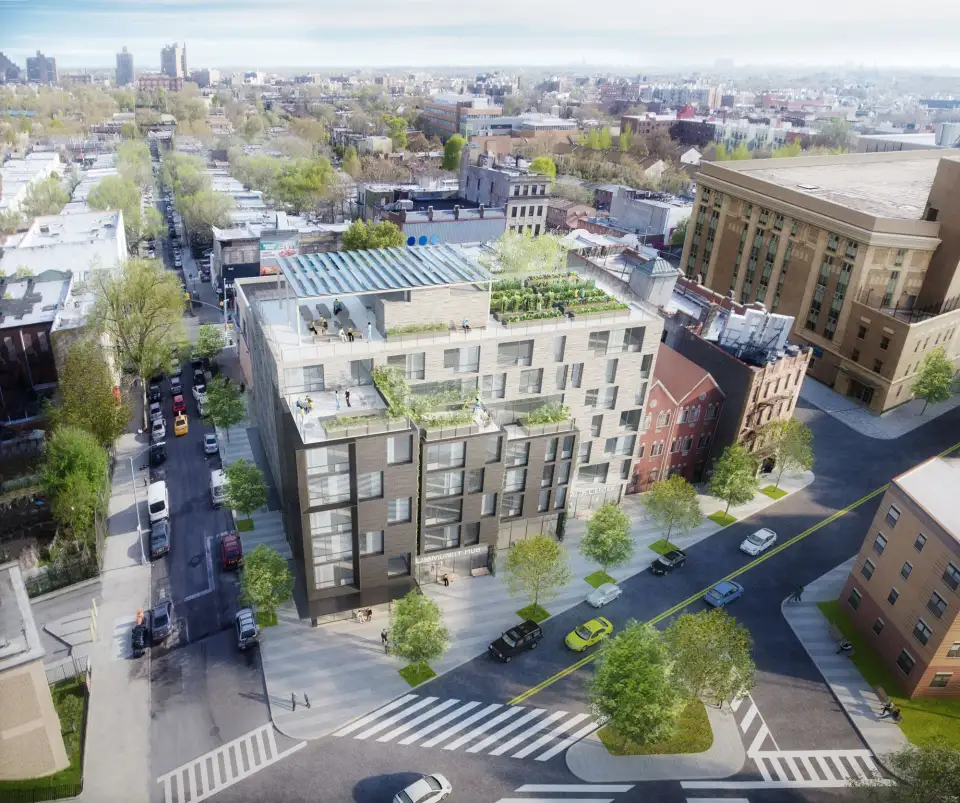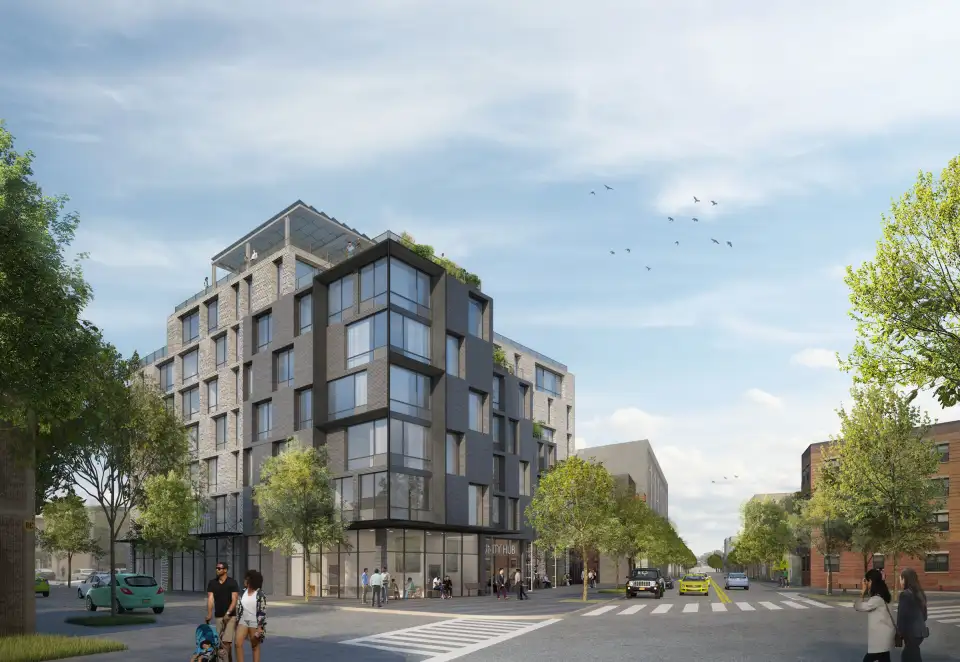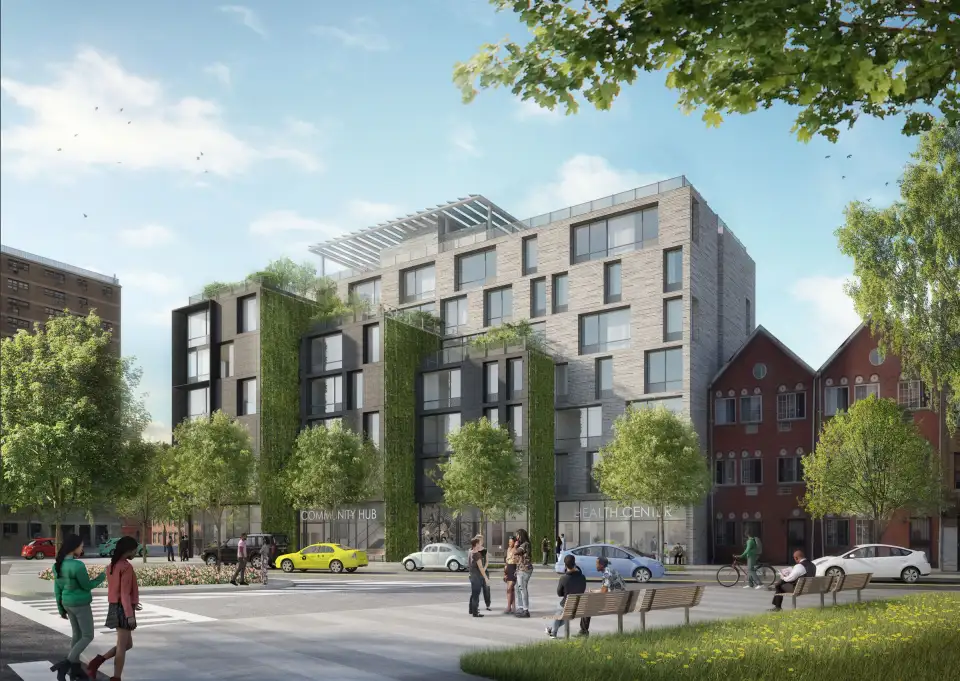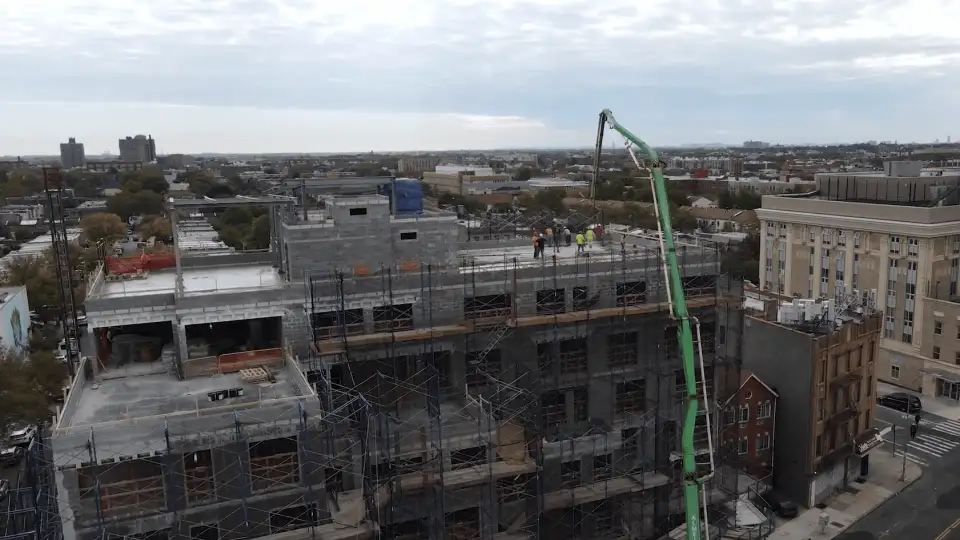
The experience of incarceration persists long after an individual leaves prison. Far too often, it can shadow a person for years as they face obstacles to housing, employment, and social services, thereby making them more susceptible to joblessness, homelessness, and hopelessness (1). These barriers to full reintegration also make recidivism more likely (2).
Taking a more expansive view, the effects of mass incarceration can transcend the individual, leading to negative impacts on the children and communities of incarcerated individuals (3)(4). Given that Black and Hispanic individuals from high-poverty communities are disproportionately represented among those involved with the criminal justice system (2), these spillover effects have been most pronounced in high-poverty communities of color like Central Brooklyn, and the neighborhood of Brownsville in particular, exacerbating many of the existing struggles these communities face. Without additional resources, people from these communities find themselves frequently trapped by a criminal justice system that perpetuates a vicious and intergenerational cycle of poverty and further incarceration (2).
To combat this kind of entrenched cycle, New York State launched the Vital Brooklyn Initiative. According to the Director of Design and Construction at the New York-based Xenolith Partners, Chris Lebron, the initiative was “focused on eliminating or addressing social, economic, and health disparities in Central Brooklyn.” Central to these disparities is the problem of reintegration of previously incarcerated individuals, particularly women and their families. They face not only difficulty accessing services, but, more crucially, affordable and supportive housing.
According to Brian Loughlin, principal of New York City-based Magnusson Architecture and Planning (MAP), lack of access to housing can prolong difficulties for those involved with the criminal justice system. The recidivism rate in Brownsville is currently one of the highest in not only New York City, but in the nation. However, when individuals are allowed to reconnect with their families once their incarceration is over, and they live together as a family unit, that recidivism rate drops precipitously. Consequently, allowing these families to stay together is more than just humane; it is also a means of creating safer, more stable and resilient communities.
When Vital Brooklyn issued multiple requests for proposal (RFPs) to convert underutilized and state-owned sites in Central Brooklyn to affordable and supportive housing, Xenolith and MAP teamed up with Women’s Prison Association, Brownsville Partnership, and several additional partners to take advantage of the opportunity. “Brownsville has one of the highest rates of reentry from the prison system back into the neighborhood,” says Xenolith Principal Andrea Kretchmer, “so the need is especially acute in a site like this.”
The partners’ proposal to develop one of the sites (known as “Site J” at the corner of East New York Avenue and Strauss Street in Brownsville) was ultimately selected. Construction is expected to be completed this year.

Known as The Rise, the project is a 72-unit building that will provide affordable and supportive housing, primarily for formerly incarcerated women and their families. Kretchmer believes that one of the reasons Xenolith’s proposal stood out was a combination of its design, high levels of sustainability, and focus on health and wellness for women. Xenolith is itself a women-owned business, and it is bringing additional resources to the site that are specifically designed to meet the needs of women. These resources include 3,000 square feet of administrative space dedicated to One Brooklyn Health System, 7,000 square feet of community facility space, and a rooftop garden. The community facility space will be used to promote a holistic vision of health. In addition to fitness programs, the space will host classes to encourage mental health, advance financial literacy and economic independence, and teach healthy eating habits.
Many of these programs are provided by local community groups based in Brownsville. For example, Project EATS is helping to create a green roof and a rooftop farming program with the goal of better connecting those who live in The Rise to nature, providing them with a source of fresh fruits and vegetables, and easing food insecurity. “Having an opportunity to live in this building and to have support in pursuing opportunities and making choices that help people to thrive where they live is key to everything Project Eats is about,” says Project EATS’s Founder Linda Goode Bryant.
In addition to participating in the Vital Brooklyn Initiative, The Rise was also a winner of the New York State Energy Research and Development Authority’s (NYSERDA ‘s) Buildings of Excellence Competition. The award from NYSERDA included $1,000,000 in funding, which allowed the development team to go from sustainable and all-electric to Passive House certified. “When that money came in,” Kretchmer says, “we were able to pivot on some of the aspects of design. That money made the difference for us being able to make that leap all the way to Passive House.” The Rise was also awarded NYSERDA’s Blue Ribbon for Design Excellence in the competition.

Pursuing PHI Classic certification is also another means of promoting occupant health. In addition to improving indoor air quality, it will also in many ways dovetail with MAP’s efforts to utilize trauma-informed design. According to MAP’s Director of Sustainability Sara Bayer, this kind of design includes elements like pleasing colors, open and green spaces, opportunities for socialization, and natural light. “It’s also the sound control—the quietness, the serenity, of the interiors,” Bayer adds.
While this kind of serenity is also one of the hallmarks of Passive House design and construction, there were instances where trauma-informed and passive design clashed. “I think that’s been one of the challenges of the project,” says Ryan Cramer, an architect with MAP.
For example, with Passive House design there is an effort to minimize the complexity of a building’s shape, since buildings with smaller surface area-to-volume ratios are more efficient. A tenet of trauma-informed design, however, is to promote access to more outdoor space, something The Rise has accomplished by building terraces on multiple floors. The result, a stepping roof that is not only a feature of the building but the source of its name, may not optimize the building’s form factor, but it will provide occupants with more opportunities to get outdoors.

Despite these countervailing influences on the design of the building, the team was able to successfully overcome these difficulties by adding more robust insulation on the exterior walls and roofs, upping the thermal performance of the windows, and carefully detailing the building envelope to ensure it is as airtight as possible. Such careful attention to detail, in combination with the use of high-performance windows, has allowed the team to incorporate loads of natural light throughout the building, making the interior spaces both comforting and comfortable.
“As challenging as it is, in the end, it’s going to be a super healthy, super sustainable building, and that’s what we want to be building,” says Xenolith’s Lebron. “It should be a goal in the industry.”
Shinn, Marybeth and Khadduri, Jill. In the Midst of Plenty: Homelessness and What to Do About It. Wiley Blackwell, 2020.
Borrelli, Brianna. “The Interplay of Mass Incarceration and Poverty.” Georgetown Journal on Poverty Law and Policy, vol. 30, no. 2, 2023, pp. 287-313.
Martin, Eric. “Hidden Consequences: The Impact of Incarceration on Dependent Children,” March 1, 2017, nij.ojp.gov: https://nij.ojp.gov/topics/articles/hidden-consequences-impact-incarceration-dependent-children.
Alexander, Michelle. The New Jim Crow: Mass Incarceration in the Age of Colorblindness. Revised Edition. The New Press, 2012.